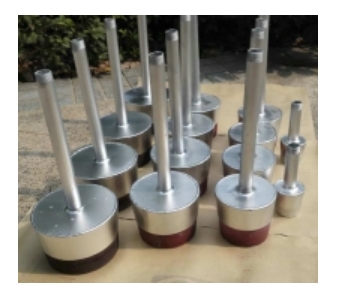- 08
- Oct
A new type of argon-blowing and breathable brick helps the induction furnace to remove inclusions
A new type of argon-blowing and breathable brick helps the induction furnace to remove inclusions
At present, most of the process for producing castings in induction furnaces adopts the remelting method, which has no refining function and cannot remove various inclusions brought in during the remelting process. The quality of molten steel cannot be guaranteed, resulting in low casting yield and low grade. How to reduce the content of various inclusions produced in the remelting process of stainless steel castings with high efficiency and low cost has become an urgent issue for enterprises that use induction furnaces to produce castings.
The argon-blowing and breathable bricks used for induction furnace smelting can reduce the content of various inclusions in the induction furnace smelting process with low cost and high efficiency, improve the grade of castings, and enable casting manufacturers to obtain good economic benefits. Argon blowing refining can achieve the purpose of degassing, decarburizing and removing oxide inclusions in molten steel. More meaningfully, blowing argon into the chromium-containing molten steel will not change the chromium content of the molten steel while decarburizing.

Installation of breathable bricks. The installation of the breathable brick in the induction furnace is very simple. There is no need to carry out large-scale transformation of the structure of the induction furnace. Only a circular hole with a diameter of 40 mm to 60 mm is drilled on the asbestos board or prefabricated block at the bottom of the furnace to guide the breathable brick. The argon blowing pipeline can be equipped with bottled industrial argon as the argon source. The furnace building process of the induction furnace with air-permeable bricks is the same as that of the ordinary induction furnace.
The use of ordinary ladle breathable bricks on induction furnaces. Ordinary ladle air-permeable bricks will leak after being used for 10-15 times on a 750 kg induction furnace. After dismantling the furnace, observe the situation of the ventilated bricks. The air leakage is mainly concentrated at the welding place between the ventilating brick bottom plate and the iron sheet, and a small amount occurs at the ventilating brick bottom plate and the metal pipe welding. According to analysis, ordinary ladle venting bricks use iron sheet and carbon steel bottom plate to make the air chamber. When the ventilating brick is working in the induction furnace, the iron sheet and carbon steel bottom plate are cut by magnetic lines and then heated by induction. The temperature can reach about 800 degrees Celsius. Cool to room temperature when tapping. After repeatedly undergoing high temperature and cooling stages, high temperature oxidation and stress concentration will cause cracks and air leakage at the welds of the ventilating bricks. At the same time, the thickness of the iron sheet is only 1 mm to 2 mm, so it is most likely to crack at the weld between the carbon steel base plate and the iron sheet. Based on the above application results and analysis of the reasons, it is believed that the service life of ordinary ladle air-permeable bricks on the induction furnace is difficult to match the service life of the induction furnace lining, and needs to be improved.

The use of a new type of air-permeable brick on the induction stove. According to the results of using ordinary ladle air-permeable bricks on induction furnaces, a new type of air-permeable brick has been successfully developed. This new type of air-permeable brick abandons the design idea of ordinary ladle air-permeable bricks using metal materials to make air chambers and air supply pipes, and uses non-metallic materials to make air chambers and ceramic pipes as air supply pipes. The new ventilated bricks were subjected to bottom-blowing tests in 250 kg, 500 kg and 750 kg medium frequency induction furnaces respectively. Its performance can fully meet the smelting needs of medium frequency induction furnaces, and the life will not be a limiting factor for the overall life of the induction furnace. At the same time, during the test, it was found that after the bottom blowing measures were applied, due to the scouring effect of the airflow, whether it was ramming the furnace lining or the crucible, the upper part of the furnace was corroded faster, resulting in a decrease in the life of the furnace lining. At the same time, the test report also pointed out that the content of non-spherical inclusions in molten steel was lower than the forging standard, and the content of spherical oxide inclusions reached the 0.5A standard. This result shows that the application of the argon blowing process with breathable bricks in the intermediate frequency induction furnace can effectively improve the quality of molten steel and ultimately improve the grade of castings.
